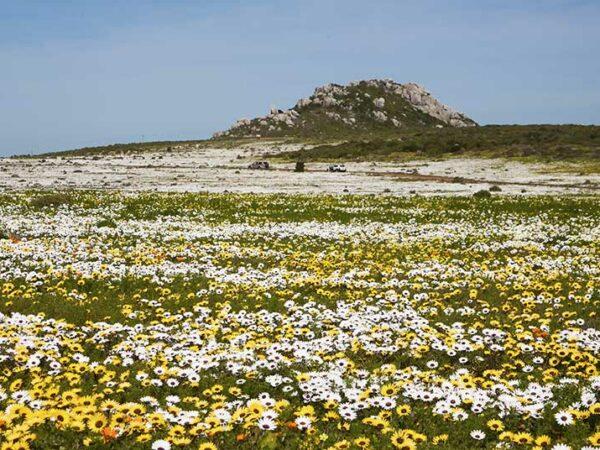
Mountain fires during the summer months are an unfortunate but familiar sight in Cape Town. Residents and firefighters dread hot windy days when the smallest spark can cause a runaway fire.
It’s normal for there to be dozens of fires in Cape Town each year. Thankfully, most are controlled and put out within a matter of hours. The most fires recorded in one year was 210 in 2015.
For people living close to affected areas, the aftermath can be hard to deal with. Ash and smoke enter homes, leaving residents with a significant clean-up job.
The effects of Cape Town’s fires
Already, areas of mountainside that appeared completely charred and desolate after the fires are showing signs of new growth. Within limits, fire is part of the region’s ecology. The Cape’s fynbos relies on periodic fires, with some species depending on fire for seed germination.
However, fynbos is lost where alien species cause fires to burn too hot. Many animals, such as tortoises, perish. Nonetheless, by spring, the mountainsides will again be blanketed in colourful, diverse plant life, along with myriad insects and animals.
As climate change worsens, global temperatures are on the rise and fires are becoming more frequent. Their impact may be greater.
Fire safety in Cape Town: precautions and emergency measures
Unfortunately, many fires in Cape Town are caused by carelessness and poor fire safety awareness. Becoming familiar with fire prevention information can ensure your actions never lead to a fire and will teach you what to do in the event of a fire.
If you spot a fire, immediately call the emergency services. Cape Town’s 24-hour emergency fire contact numbers are 021 480 7700 (from a cellphone) and 107 (from a landline). Find more information about Cape Town’s fire services on its website.
Below are some useful articles and booklets on fire awareness education.
Safety and fire during the hot, dry and windy Cape Town summer months
A Cape Town-focused article on what to do in the event of a nearby fire. It includes a useful checklist for people living in fire-prone areas.
Wildfire Awareness Toolkit
This is a useful education tool for teaching people about fire and how it affects the environment.
Be Wild Fire Ready booklet
This booklet is particularly useful for people who live in fire-inclined areas. It will help you prepare and be ready in the event of a nearby wildfire.
Cleaning up after the fires
Even with all doors and windows closed, it can be impossible to prevent smoke and ash from entering your home, especially if the fire is close by.
Vacuuming helps with ash particles but this is seldom sufficient for carpets and soft furnishings. Leftover ash and smoke particles are stirred up every time someone walks over the area or vacuums again.
These particles, along with dust, pollen, skin cells and other contaminants in carpets and upholstery, are allergens that can trigger bad reactions even when months have passed since the fire.
Below, we offer professional tips on how to clean your home after a fire.
Carpets
Carpets should be professionally cleaned after a nearby fire. This will eliminate smoke smells and ash particles that are deep in the fibres. Fitted carpets should be cleaned at least once a year to remove allergens and ingrained dirt.
Rugs
Take rugs outside and beat to remove loose ash and dirt. Light rugs can be machine washed at home (double check the care instructions); heavier carpets should be sent for professional cleaning.
Curtains
Because they’re close to the windows, curtains trap a lot of smoke and ash. Even when the windows are closed, contaminants get through the tiniest gaps. Machine wash curtains according to their care instructions. If your machine isn’t large enough, get them professionally cleaned.
Upholstery
Upholstery can retain the smell of smoke for a long time after a fire. Steam clean upholstered items to eliminate smells, and ash or dirt particles that might have drifted onto the fabric.
Soft furnishings
Cushions covers, tablecloths and throws should be machine or hand washed (check the care instructions) after a fire.
How Chelsea Cleaning can help
At Chelsea Cleaning, we offer a range of cleaning services that can help after a fire. We have many decades of experience and have dealt with many post-fire cleaning jobs.
We can clean fitted carpets and upholstery quickly and with minimal disruption. We offer professional rug and curtain cleaning at our factory.
Our services are available in Cape Town and most surrounding areas where fires often occur, including the Helderberg, Southern Peninsula, Winelands and West Coast.




